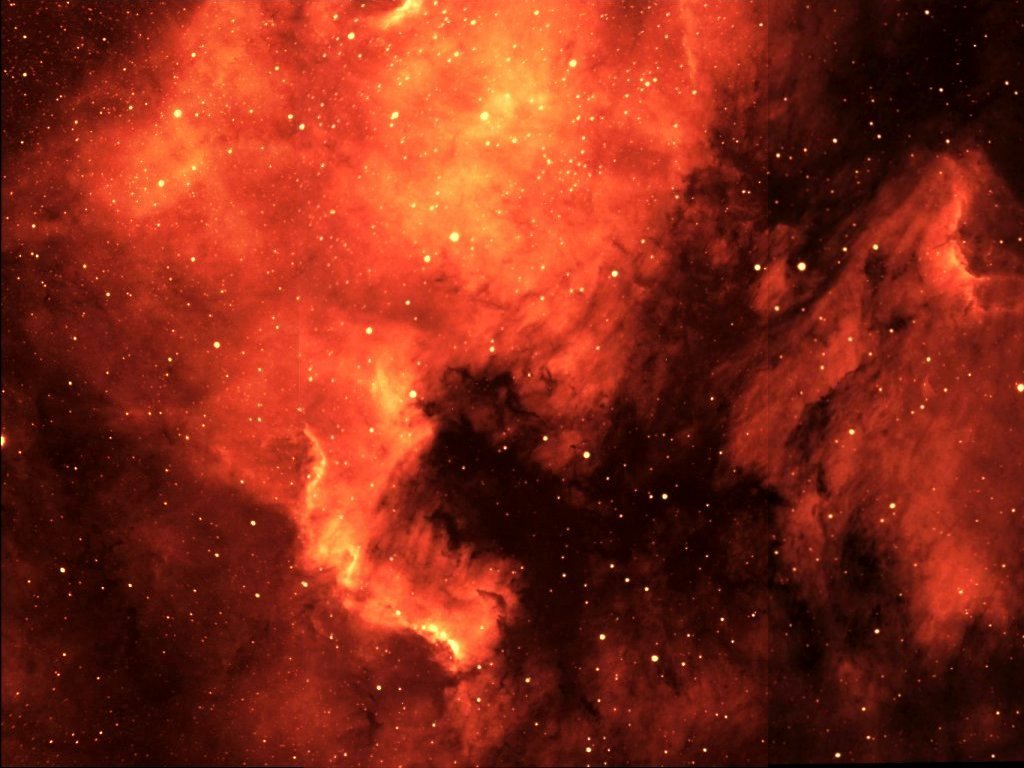|
January: The Horsehead Nebula
February: Supernova Remnant IC 443 |
|
July: NGC 6791 - An Old Star Cluster
September: Supernova in galaxy M74 | |
| Bonus: NGC 2174 | |||
|
January: The Horsehead Nebula
February: Supernova Remnant IC 443 |
|
July: NGC 6791 - An Old Star Cluster
September: Supernova in galaxy M74 | |
| Bonus: NGC 2174 | |||
The Color Imaging Process |
About the Observatory |
Calendars are available at the Iowa State University Bookstore.
Click here to order online from the Bookstore,
or
call 800-478-0048 or 515-294-0244 to order over
the phone.
for more info, contact Steve Kawaler at: sdk@iastate.edu
For a more detailed description of activities within the department, and opportunities for students at all levels, please visit our Web page at http://www.physics.iastate.edu

|
NGC 7000 - The North America Nebula (and a Pelican!)
The cover of our 2003 calendar features the vast emission nebula NGC 7000.
More commonly known as the "North America Nebula," This cloud of glowing
hydrogen bears an uncanny resemblance to a map of North America - the detail
is amazing, down to and including the Panama Canal at bottom center. To the
right, aa portion of the nebula resembles a giant pelican staring at the
mid-Atlantic coast.
This nebula is visible though binoculars during dark summer nights just north
of the star Deneb, high overhead in the constellation of Cygnus. It lies
approximately 1600 light years from Earth.
The wide-field image was produced with a smaller telescope piggyback to the
0.6m Mather telescope - the field of view here is approximately 2.5 degrees
across - about 5 times the size of the full moon.
|